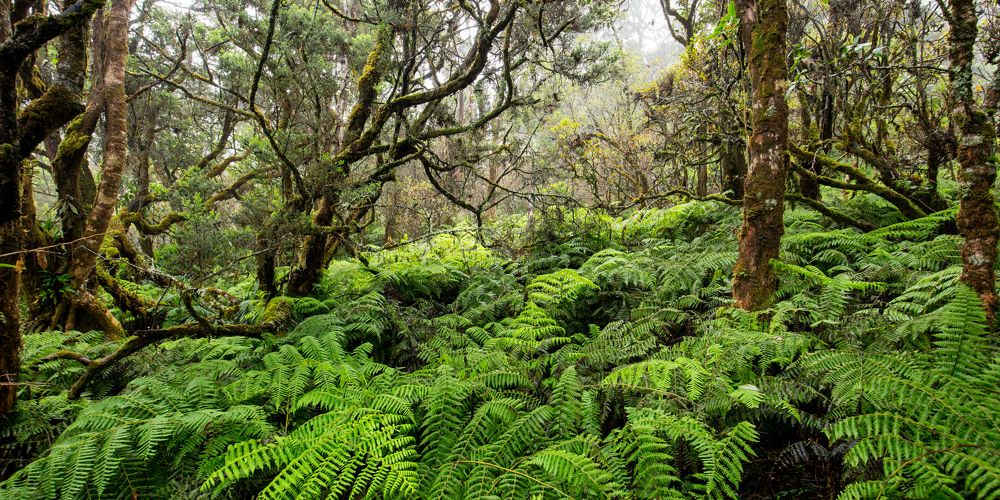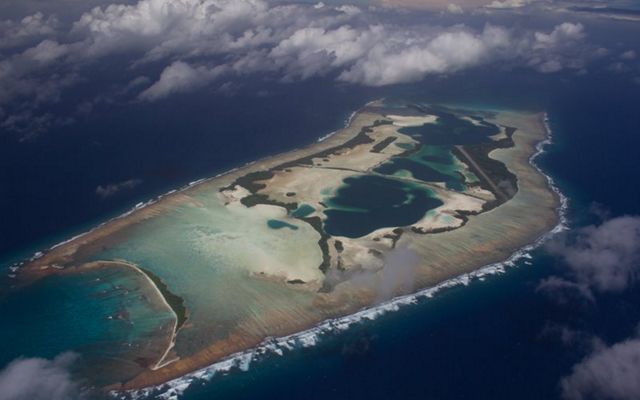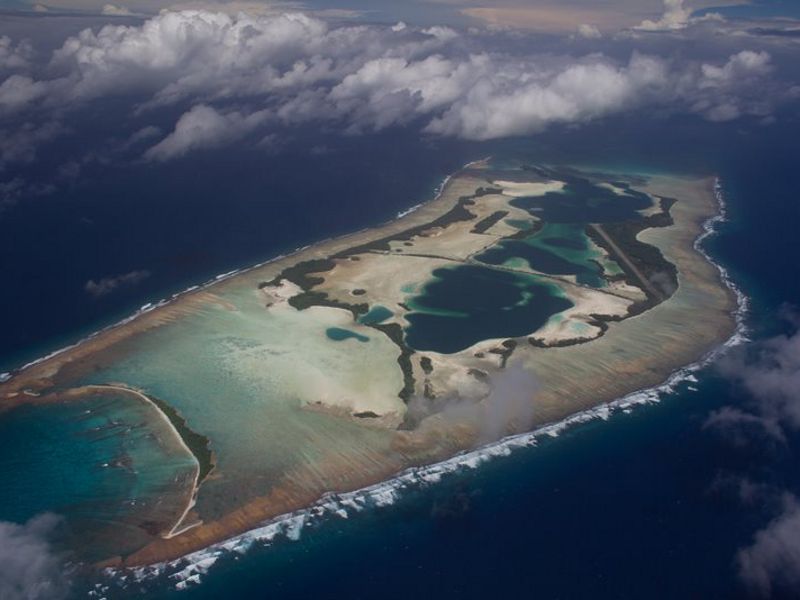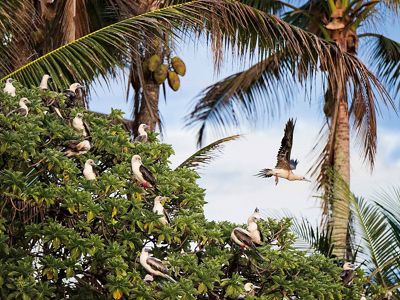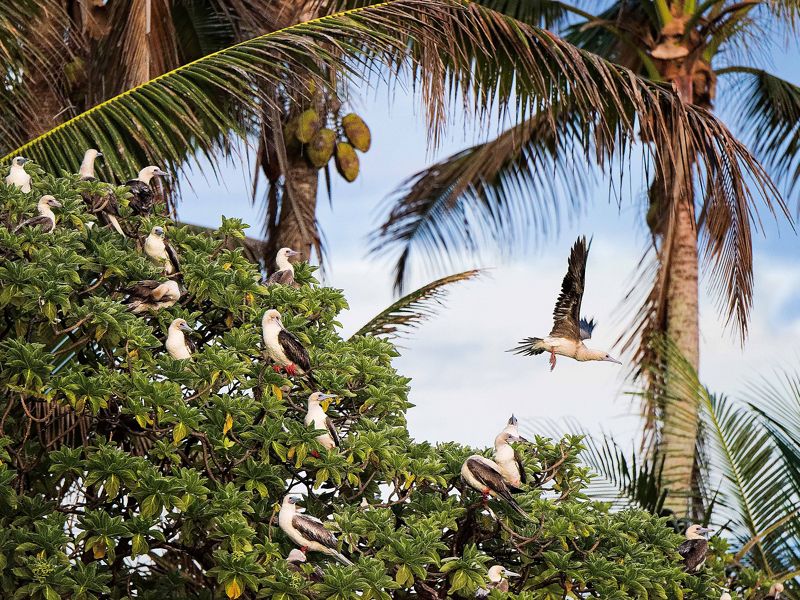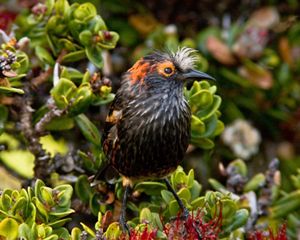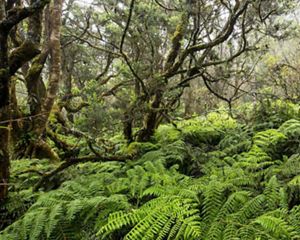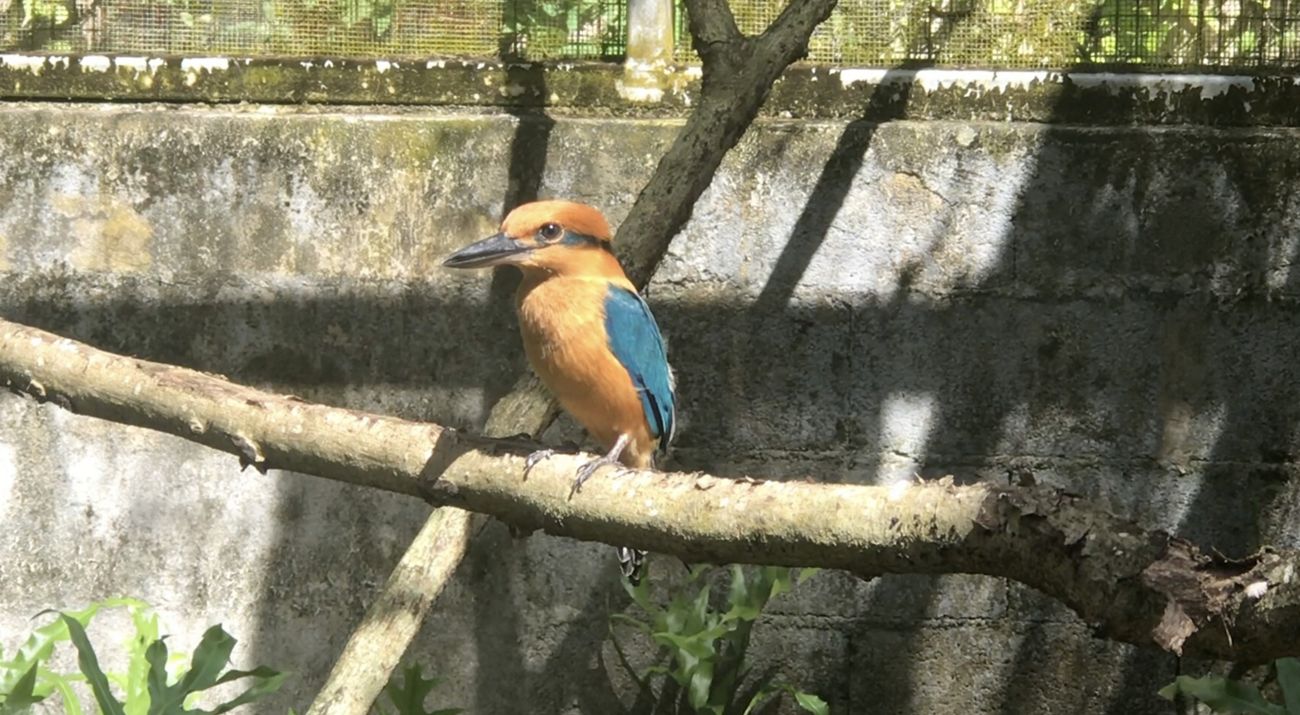
The Sihek (Guam Kingfisher) Finds Hope at Palmyra Atoll
For the first time in nearly 40 years, these stunning birds are flying free and breeding in the wild!
Welcoming the First Wild-born Sihek Eggs!
Sihek pairs are nesting and laying eggs in the wild for the first time in nearly 40 years, marking the first time the endangered birds have bred in the wild since they disappeared from their native island of Guam in the 1980s. Hopefully, this momentous occasion is another step in the Sihek’s journey back to Guam.
In 2024, nine sihek were released into the wild at Palmyra Atoll after nearly a month in aviaries, being closely monitored and cared for by conservation staff. All nine are thriving, and eight of the birds have coupled up, built nests and laid eggs. As they mature, they will have better success and soon we should be hearing chirps from the nests. It’s a small sound that will be celebrated around the world—nowhere more than on Guam.
Quote: Yolonda Topasña
These beautiful birds haven’t sung in the forests of Guam for more than 30 years, but this exciting moment [is] a pivotal step toward the eventual reintroduction of this stunning creature to Islan Guåhan.
Get updates on the sihek & more at Palmyra Atoll!
Sign up to receive regular conservation updates from Hawai‘i.
Known as sihek by the Indigenous CHamoru* people, these colorful birds are native to Guam, where they have deep cultural and spiritual significance. But in the 1940s the arrival of an invasive species—the brown tree snake—led to the sihek becoming extinct in the wild, with the last wild sighting in 1988.
The loss of wild sihek in Guam is a tragedy. While the road to reintroducing them to their native forests is long, conservationists around the globe are working together to achieve this goal. Since the 1980s, the island bird has survived in conservation zoos and other wildlife facilities. Today, around 130 adult sihek are cared for at 25 zoos and institutions and a Guam Department of Agriculture facility, and preliminary efforts are underway to eradicate the brown tree snake on Guam’s Cocos Island, which could someday create a safe environment for the birds to return to Guam. In the meantime, the Sihek Recovery Program is working to establish a self-sustaining wild population at Palmyra Atoll where nine sihek are currently flying free. Hopefully more chicks will arrive soon!
*The CHamoru name is spelled with a capitalized H. Guam is spelled Guåhan in CHamoru.
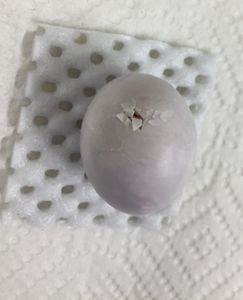
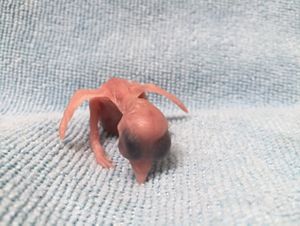

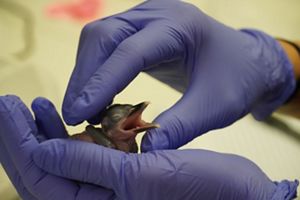
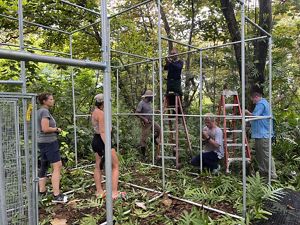

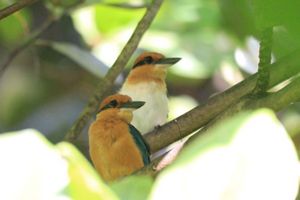
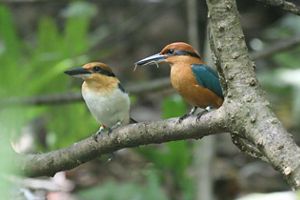

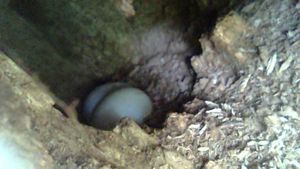

Sihek Egg: A sihek egg begins to hatch at a specialized quarantine rearing facility at Sedgwick County Zoo. © ZSL

Sihek Hatchling: A newly hatched sihek at Sedgwick County Zoo. © ZSL

Sihek Recovery Program: This 10-day-old chick will be raised by expert bird keepers and eventually released into the wild on Palmyra Atoll. © ZSL

Sihek Chick: This 10-day-old chick was raised by expert bird keepers for release into the wild on Palmyra Atoll. © Thomas Manglona KUAM

Sihek Recovery Program: TNC and partners from the Program built 3 aviaries to receive sihek chicks at our preserve and research station at Palmyra Atoll. © Caitlin Andrews

Sihek fly free : In a monumental new chapter for a magnificent bird, the sihek (Guam kingfisher) is once again flying in the wild at TNC’s Preserve and Research Station at Palmyra Atoll. © Smithsonian

Sihek Pair: Sihek (Guam kingfisher) pairs are nesting and laying eggs in the wild for the first time in nearly 40 years at TNC’s Palmyra Atoll Preserve. © Martin Kastner/TNC-ZSL

Sihek Pair: One of the four established couples that have built nests and laid several clutches of eggs on Palmyra Atoll. © Marin Kastner/TNC-ZSL

Sihek nest: A sihek pokes its head out of a hole in a tree. © Martin Kastner/TNC-ZSL

Two Sihek Eggs: Sihek pairs are nesting and laying eggs in the wild for the first time in nearly 40 years at TNC’s Palmyra Atoll Preserve. © TNC-ZSL
Sihek chicks destined for Palmyra were hand-reared at a specialized quarantine rearing facility at Sedgwick County Zoo in Kansas. Several facilities contributed eggs to this effort, including Cincinnati Zoo, National Aviary, Disney’s Animal Kingdom, Brookfield Zoo and Sedgwick County Zoo.
On August 28, 2024, nine birds traveled from Wichita, Kansas to Palmyra Atoll. Scientists with TNC’s Island Resilience strategy and Zoological Society of London (ZSL) will be stationed on the remote atoll for the next five years to care for and monitor the birds while also collecting rare insights on how the species behaves in the wild.
Upon arrival, the sihek started eating right away, instinctually preened when they experienced their first rainfall and began hunting spiders, geckos and crabs. Once deemed healthy, each bird was fitted with a tiny radio tracker so the project team can monitor their movements as they leave the aviaries and settle in across the atoll.
Thriving in the Wild
After their release, the four female and five male birds quickly explored their new home, learning how to forage and hunt new prey within the tropical forest. Four pairs have since established territories and built nests, three of the pairs have laid eggs and two pairs have laid multiple clutches of eggs.
With the mated pairs just over a year old, this is their first time incubating and caring for eggs, meaning it’s likely it will take a few rounds of egg laying for the birds to hone their skills and hatch chicks. Nonetheless, these eggs demonstrate both the tremendous resilience of these remarkable birds and the power of conservation to create a second chance for species on the brink of extinction.
Participating AZA-accredited institutions across the U.S. are continuing to raise sihek. In the coming years, some of these chicks will also journey to Palmyra, with the ultimate goal of establishing 10 breeding pairs there. This project paves the way for a growing, wild sihek population for the first time since the 1980s.
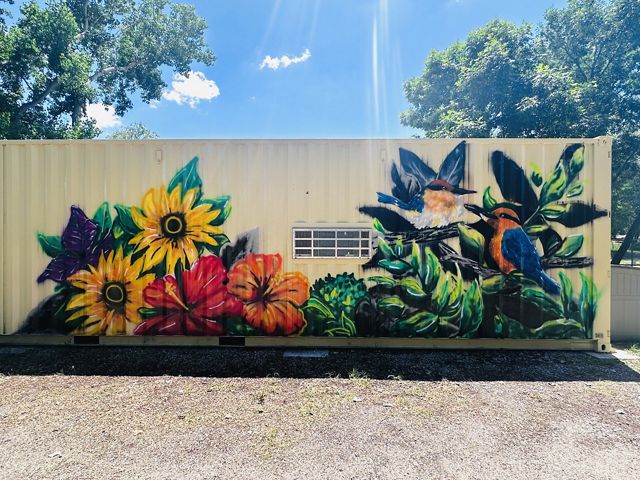
Connecting with Guam
Enthusiasm for the Sihek Recovery Project inspires scientists, children and artists. Guam artist Frank Candaso painted a sihek mural on the biosecurity facility at Sedgwick County Zoo, where the chicks were raised before being sent to Palmyra Atoll.

“A Kinship I Hope for All to Feel”
Yolonda Topasña, Guam DAWR resources program coordinator, reflects on the emotional significance of the first egg-laying at Palmyra, which came from the female Tutuhan. Some of the birds were named in an online voting process, and the team has become deeply connected with each individual bird.
“The Guåhan sihek continue to etch their story upon us, marking milestones with Tutuhan again at the forefront! Tutuhan was the first hatchling last year and now is the first to produce eggs. Her name means beginning, and she showed signs of strength from the beginning, wanting to feed herself before being old enough to do so. Tutuhan challenged two other females for Hinanao’s partnership and won! Now our pair take turns watching over their precious eggs.
“The connection I feel with Tutuhan is a kinship I hope for all to feel. I envision our people, the CHamoru, those who dwell in our beloved Guåhan and those scattered across the vast oceans, to feel the same stirring of ancestral pride.
“A dear friend in Washington, but whose roots run deep on Guåhan, shared a memory, a vision of sihek soaring freely over their lancho (farm) in Dededo in the mid-1970s. My friends’ father warned the family to leave sihek alone, and they respected and obeyed. These are the stories that bind us, the whispers of our past that illuminate our present. These conversations are what will bring us all together to celebrate the lives of the sihek thriving on Palmyra Atoll and, in turn, will help us all take pride in our culture and heritage.
“Our heartfelt thanks go out to all our partners for their unwavering dedication to sihek recovery, especially those toiling diligently in the breeding facilities. We see and appreciate your hard work.
“Ginen i maolek na che’cho’-mu ni’ un satba este siha na paluma, un satba i kotturan-ta CHamoru. Manmagof ham nu hagu. (Through your efforts of saving these magnificent birds, you are safeguarding our CHamoru culture. We deeply appreciate you.)”
Quote: Professor John Ewen
Returning species to the wild is a long, carefully planned journey built upon global scientific expertise. Sihek deserve a chance to flourish in the wild once again—and it’s well worth taking our time to get it right.
Palmyra Atoll: A Refuge for Endangered Species
Sihek are being introduced to Palmyra Atoll because it is one of the most healthy land and ocean ecosystems on the planet, thanks to decades of protection and restoration work by TNC and partners. Located 1,000 miles south of Hawai‘i, the atoll is the only fully protected habitat for birds in the equatorial Pacific and comprises a spectacular marine wilderness. TNC purchased Palmyra Atoll in 2000 to preserve it and turned over the majority of the property to the U.S. Fish and Wildlife Service. As part of our Island Resilience Strategy, TNC maintains a globally significant preserve and research station at Palmyra.
Our work to remove invasive species like rats and restore native tropical forest has created a rare and wonderful opportunity at Palmyra: the atoll is free from invasive predators, incredibly wild and carefully monitored. It offers high-quality forest habitat suitable for sihek that is similar to their native forests. And extensive research shows that introducing the sihek will have minimal effects on native wildlife at Palmyra. All this makes Palmyra one of the only places in the world where conditions are suitable for the sihek to re-enter the wild. So far, they are thriving in their new home.

Take Action for Nature
To learn about how you can support Hawai’i’s vanishing forest birds, contact us.
